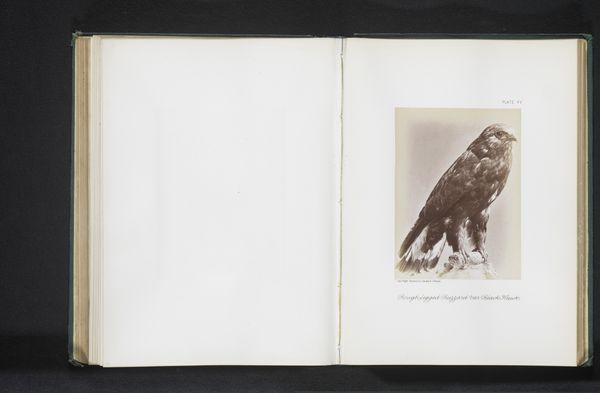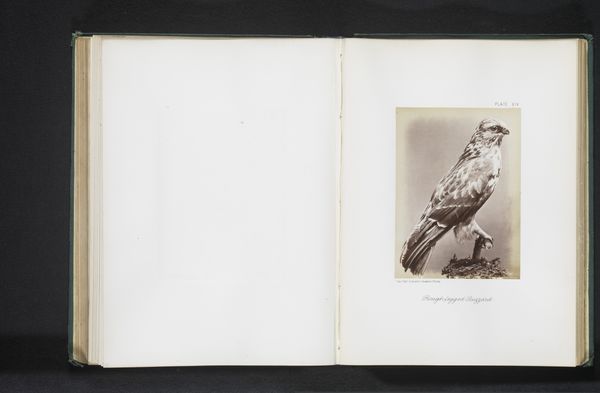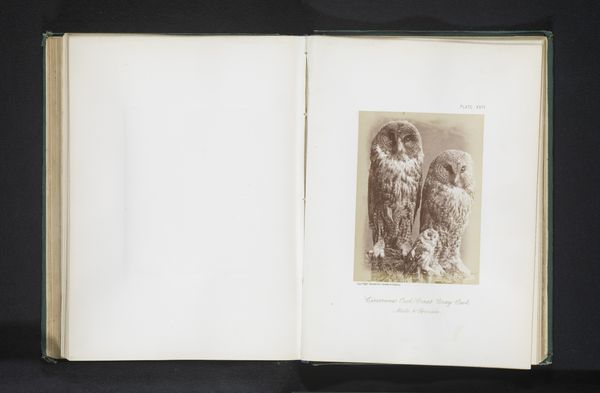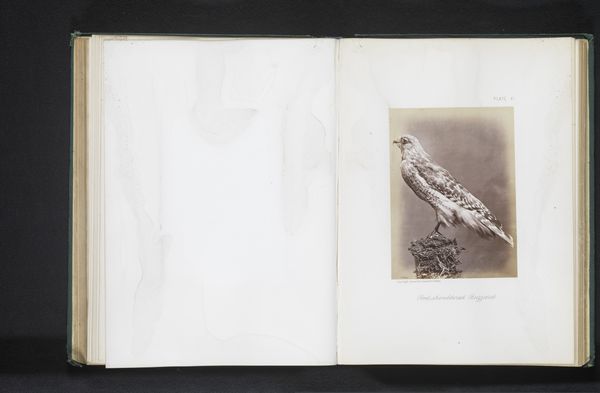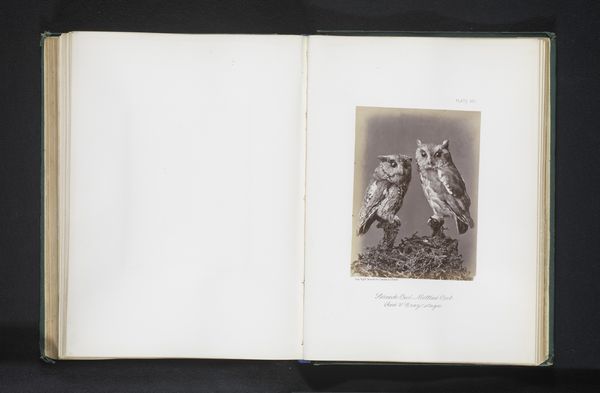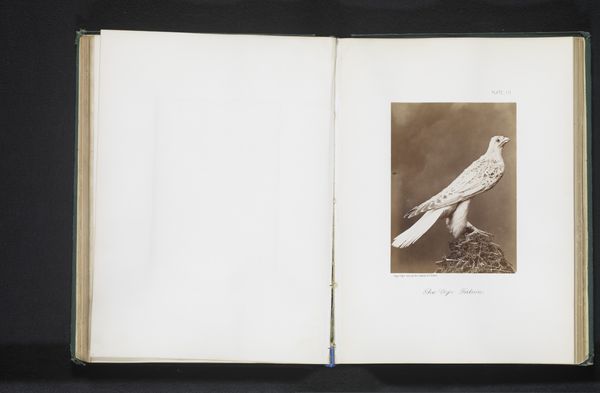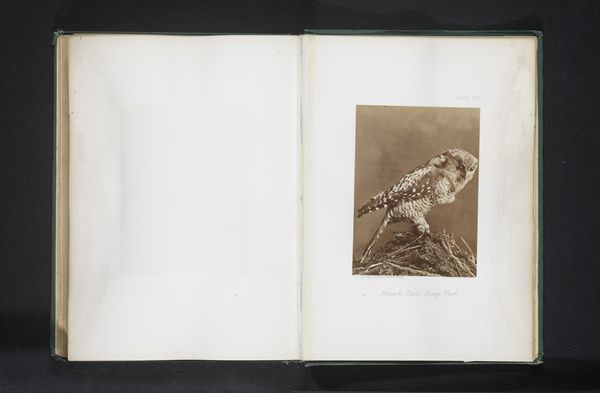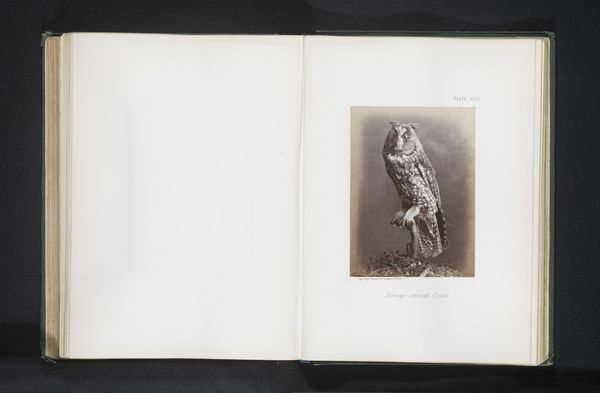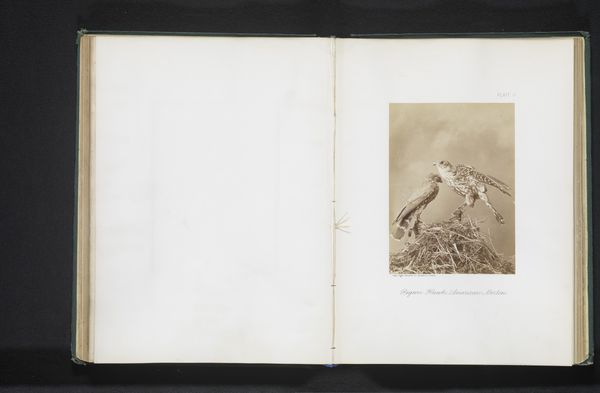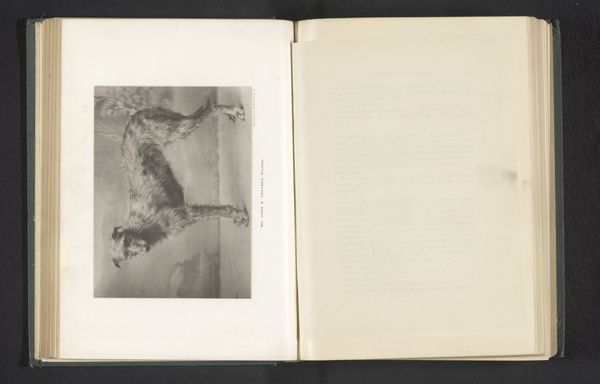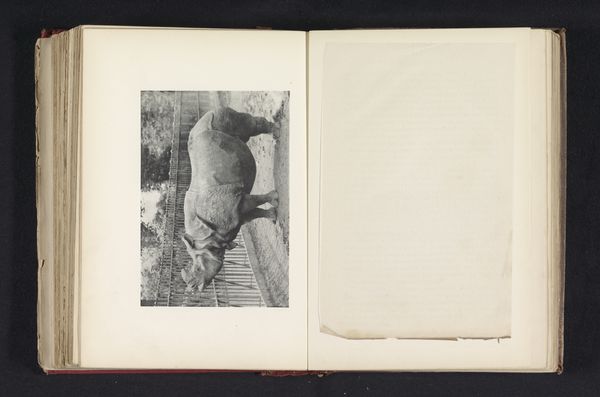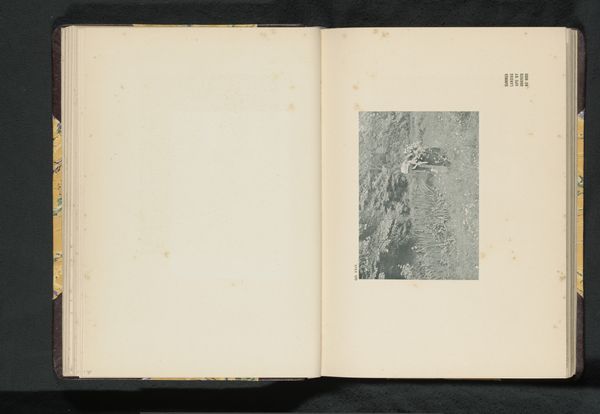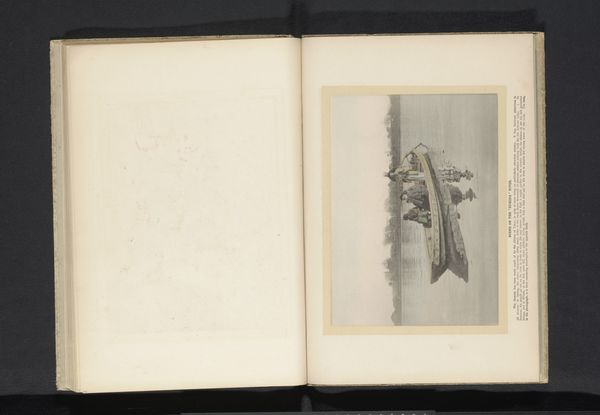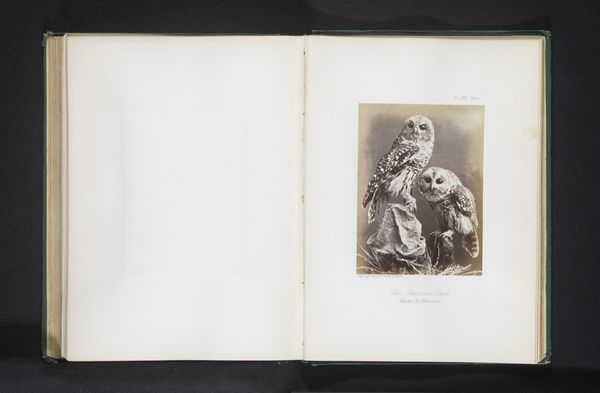
photography, gelatin-silver-print, albumen-print
#
portrait
#
photography
#
gelatin-silver-print
#
albumen-print
Dimensions: height 139 mm, width 103 mm
Copyright: Rijks Museum: Open Domain
Editor: Here we have William Notman's "Opgezette roodstaartbuizerd," or "Mounted Red-tailed Hawk," dating from 1871 to 1876. It's a gelatin-silver print or albumen print, preserved in an album. The hawk appears so serious and stately; almost like a distinguished gentleman! How do you interpret this work in light of its historical context? Curator: This piece raises some fascinating questions about the relationship between art, science, and colonialism in the 19th century. Think about it: photography was relatively new, and taxidermy was a popular way to study and display natural history. So, in what way do you think photography and taxidermy reflect a particular way of seeing and controlling the natural world at that time? Editor: That's a great point. The controlled studio setting, the precise pose... it does feel like an attempt to categorize and possess nature. It's interesting that Notman chose photography to do it. Curator: Exactly! Notman was a successful commercial photographer. Photographing the hawk, in a way, brings a kind of authority and realism that drawing or painting may lack. The photographs could then be circulated in albums to far greater reach than a unique painting. Do you think the widespread availability of photography changes the status and perception of animals like this red-tailed hawk? Editor: Definitely. Suddenly, a bird from a distant land isn’t so distant anymore. It brings an accessibility, but maybe also encourages a sense of ownership, a sense of mastery over nature through representation. It almost prefigures nature documentaries in a way, but with a different purpose. Curator: Precisely. It encapsulates this era’s drive to catalogue, disseminate knowledge, and ultimately, exert power through visual representation. This image encapsulates a specific cultural moment of science and image-making. Editor: This makes me think so differently about a photograph of an animal; more than just documentation, but a potent cultural artifact.
Comments
No comments
Be the first to comment and join the conversation on the ultimate creative platform.
